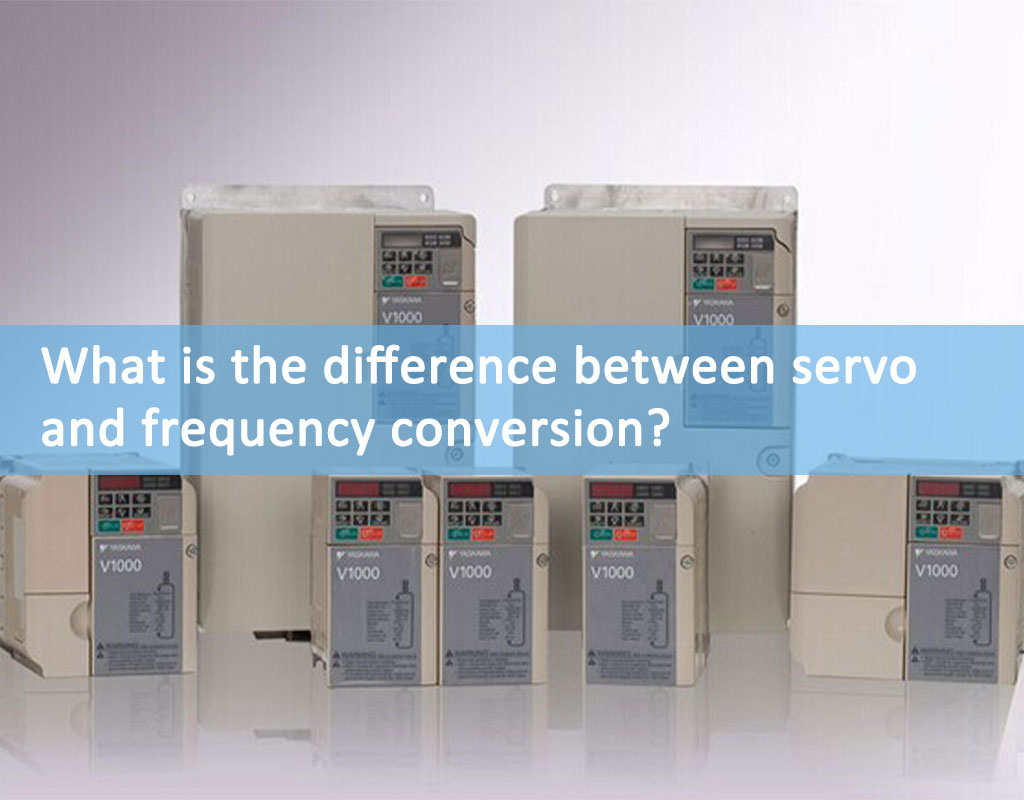What is the difference between servo and frequency conversion?

What is a frequency converter
According to the definition of "GB/T 2900.1-2008 Basic Terms of Electrical Engineering": Frequency converter refers to an electric energy converter that changes the frequency related to electric energy.
Simple frequency converters can only adjust the speed of AC motors. It can be open-loop or closed-loop depending on the control method and frequency converter. This is the traditional V/F control method. Now many frequency converters have established mathematical models to convert the stator magnetic field UVW3 phases of AC motors into two current components that can control the motor speed and torque. Now most famous brands of frequency converters that can perform torque control use this method to control torque. The output of each phase of UVW must be added with a molar effect current detection device. After sampling and feedback, the PID adjustment of the current loop with closed-loop negative feedback is formed; ABB's frequency converter has proposed a direct torque control technology that is different from this method. Please refer to relevant information for details. In this way, both the speed and torque of the motor can be controlled, and the speed control accuracy is better than v/f control. Encoder feedback can be added or not. When it is added, the control accuracy and response characteristics are much better.
What is a servo
Driver: Based on the development of frequency conversion technology, the servo driver has implemented more precise control technology and algorithmic operations in the current loop, speed loop and position loop (the frequency converter does not have this loop) inside the driver than in general frequency conversion. It is also much more powerful than traditional servos in terms of functions. The main point is that it can perform precise position control. The speed and position are controlled by the pulse sequence sent by the upper controller (of course, some servos have integrated control units or directly set parameters such as position and speed in the driver through bus communication). The internal algorithm of the driver, faster and more accurate calculations, and better-performing electronic devices make it superior to the frequency converter.
Motor: The material, structure and processing technology of servo motors are much better than those of AC motors driven by inverters (general AC motors or various types of variable frequency motors such as constant torque and constant power). That is to say, when the driver outputs a power supply with rapidly changing current, voltage and frequency, the servo motor can produce corresponding action changes according to the power supply changes. The response characteristics and overload resistance are much better than those of AC motors driven by inverters. The serious difference in motors is also the fundamental reason for the difference in performance between the two. That is to say, it is not that the inverter cannot output a power signal that changes so quickly, but that the motor itself cannot respond. Therefore, when the internal algorithm of the inverter is set, a corresponding overload setting is made to protect the motor. Of course, even if the inverter output capacity is not set, it is still limited. Some inverters with excellent performance can directly drive servo motors!
An important difference between servo and frequency conversion
Frequency conversion can be done without encoders, but servos must have encoders for electronic commutation. The technology of AC servo itself is based on and applies frequency conversion technology. It is achieved by imitating the control method of DC motors through frequency conversion PWM on the basis of DC motor servo control. In other words, AC servo motors must have frequency conversion: frequency conversion is to rectify the 50, 60HZ AC power into DC power first, and then invert it into a frequency-adjustable waveform similar to sine and cosine pulsating power through various transistors with controllable gates (IGBT, IGCT, etc.) through carrier frequency and PWM regulation. Since the frequency is adjustable, the speed of the AC motor can be adjusted (n=60f/2p, n speed, f frequency, p pole pair number).
Copyright 2025 @ Xiamen Wusu Network Technology Co., Ltd. .All Rights Reserved.Sitemap | Blog | XML | Privacy Policy
 Network Supported
Network Supported